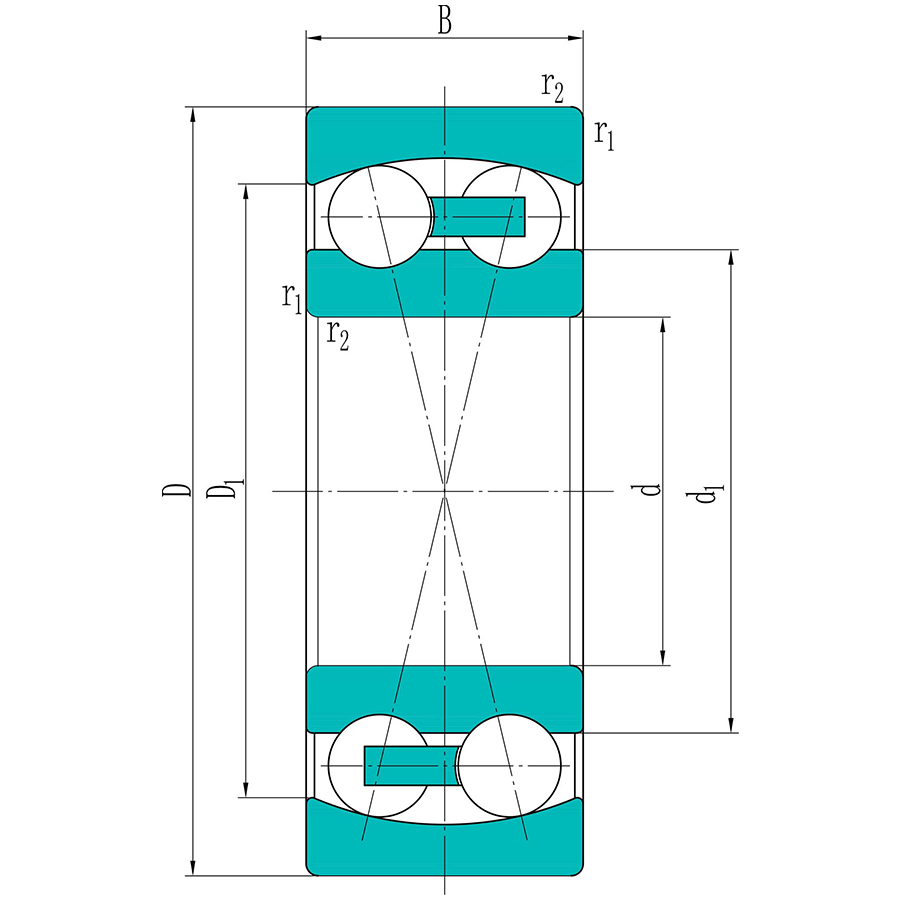
Изображения могут отличаться от продукта. Подробнее см. технические характеристики.
Поиск нужной модель подшипника.
Стандарт
GB,ASTM/AISI,ГОСТ,BS,JIS,NF,DIN / VDEh
Материал
52100, 100Cr6, SUJ2, stainless steel
Бренд
QIBR/OEM/Neutral
Применения
Conveyor systems, agricultural machinery, and textile machinery, etc
Внутренний диаметр (d)
5-50 mm
Наружный диаметр (D)
19-110mm
Вес
0.009-1.2 kg
Упаковка
Standard Export Package

| NO. | Product | Product Number | Базовая динамическая нагрузка | Базовая статическая нагрузка | Отверстие | Вес | Наружный диаметр (D) | Ширина (B) |
|---|---|---|---|---|---|---|---|---|
| 1 |

|
135 TN9 | 2.51 KN | 0.48 KN | 5 mm | 0.009 kg | 19 mm | 6 mm |
| 1 |

|
135/P5 | 2.51 KN | 0.48 KN | 5 mm | 0.009 kg | 19 mm | 6 mm |
| 1 |

|
135 C3 | 2.51 KN | 0.48 KN | 5 mm | 0.009 kg | 19 mm | 6 mm |
| 1 |

|
135 | 2.51 KN | 0.48 KN | 5 mm | 0.009 kg | 19 mm | 6 mm |
| 1 |

|
135 ETN9 | 2.51 KN | 0.48 KN | 5 mm | 0.009 kg | 19 mm | 6 mm |
| 1 |

|
135 E-2RS1TN9 | 2.51 KN | 0.48 KN | 5 mm | 0.009 kg | 19 mm | 6 mm |
| 1 |

|
135 E-2RS1KTN9 | 2.51 KN | 0.48 KN | 5 mm | 0.009 kg | 19 mm | 6 mm |
| 1 |

|
135/P6 | 2.51 KN | 0.48 KN | 5 mm | 0.009 kg | 19 mm | 6 mm |
| 1 |

|
135 EKTN9 | 2.51 KN | 0.48 KN | 5 mm | 0.009 kg | 19 mm | 6 mm |
| 2 |

|
126 TN9 | 2.51 KN | 0.48 KN | 6 mm | 0.009 kg | 19 mm | 6 mm |
| 2 |

|
126/P5 | 2.51 KN | 0.48 KN | 6 mm | 0.009 kg | 19 mm | 6 mm |
| 2 |

|
126 C3 | 2.51 KN | 0.48 KN | 6 mm | 0.009 kg | 19 mm | 6 mm |
| 2 |

|
126 | 2.51 KN | 0.48 KN | 6 mm | 0.009 kg | 19 mm | 6 mm |
| 2 |

|
126 ETN9 | 2.51 KN | 0.48 KN | 6 mm | 0.009 kg | 19 mm | 6 mm |
| 2 |

|
126 E-2RS1KTN9 | 2.51 KN | 0.48 KN | 6 mm | 0.009 kg | 19 mm | 6 mm |
| 2 |

|
126/P6 | 2.51 KN | 0.48 KN | 6 mm | 0.009 kg | 19 mm | 6 mm |
| 2 |

|
126 EKTN9 | 2.51 KN | 0.48 KN | 6 mm | 0.009 kg | 19 mm | 6 mm |
| 2 |

|
126 E-2RS1TN9 | 2.51 KN | 0.48 KN | 6 mm | 0.009 kg | 19 mm | 6 mm |
| 3 |

|
127 TN9 | 2.65 KN | 0.56 KN | 7 mm | 0.014 kg | 22 mm | 7 mm |
| 3 |

|
127/P5 | 2.65 KN | 0.56 KN | 7 mm | 0.014 kg | 22 mm | 7 mm |
| 3 |

|
127 C3 | 2.65 KN | 0.56 KN | 7 mm | 0.014 kg | 22 mm | 7 mm |
| 3 |

|
127 | 2.65 KN | 0.56 KN | 7 mm | 0.014 kg | 22 mm | 7 mm |
| 3 |

|
127 ETN9 | 2.65 KN | 0.56 KN | 7 mm | 0.014 kg | 22 mm | 7 mm |
| 3 |

|
127 E-2RS1KTN9 | 2.65 KN | 0.56 KN | 7 mm | 0.014 kg | 22 mm | 7 mm |
| 3 |

|
127 E-2RS1TN9 | 2.65 KN | 0.56 KN | 7 mm | 0.014 kg | 22 mm | 7 mm |
| 3 |

|
127/P6 | 2.65 KN | 0.56 KN | 7 mm | 0.014 kg | 22 mm | 7 mm |
| 3 |

|
127 EKTN9 | 2.65 KN | 0.56 KN | 7 mm | 0.014 kg | 22 mm | 7 mm |
| 4 |

|
108 TN9 | 2.65 KN | 0.56 KN | 8 mm | 0.014 kg | 22 mm | 7 mm |
| 4 |

|
108/P5 | 2.65 KN | 0.56 KN | 8 mm | 0.014 kg | 22 mm | 7 mm |
| 4 |

|
108 C3 | 2.65 KN | 0.56 KN | 8 mm | 0.014 kg | 22 mm | 7 mm |
| 4 |

|
108 | 2.65 KN | 0.56 KN | 8 mm | 0.014 kg | 22 mm | 7 mm |
| 4 |

|
108 ETN9 | 2.65 KN | 0.56 KN | 8 mm | 0.014 kg | 22 mm | 7 mm |
| 4 |

|
108 E-2RS1TN9 | 2.65 KN | 0.56 KN | 8 mm | 0.014 kg | 22 mm | 7 mm |
| 4 |

|
108 EKTN9 | 2.65 KN | 0.56 KN | 8 mm | 0.014 kg | 22 mm | 7 mm |
| 4 |

|
108 E-2RS1KTN9 | 2.65 KN | 0.56 KN | 8 mm | 0.014 kg | 22 mm | 7 mm |
| 4 |

|
108/P6 | 2.65 KN | 0.56 KN | 8 mm | 0.014 kg | 22 mm | 7 mm |
| 5 |

|
129 TN9 | 3.9 KN | 0.82 KN | 9 mm | 0.022 kg | 26 mm | 8 mm |
| 5 |

|
129/P5 | 3.9 KN | 0.82 KN | 9 mm | 0.022 kg | 26 mm | 8 mm |
| 5 |

|
129 C3 | 3.9 KN | 0.82 KN | 9 mm | 0.022 kg | 26 mm | 8 mm |
| 5 |

|
129 | 3.9 KN | 0.82 KN | 9 mm | 0.022 kg | 26 mm | 8 mm |
| 5 |

|
129 ETN9 | 3.9 KN | 0.82 KN | 9 mm | 0.022 kg | 26 mm | 8 mm |
| 5 |

|
129 EKTN9 | 3.9 KN | 0.82 KN | 9 mm | 0.022 kg | 26 mm | 8 mm |
| 5 |

|
129 E-2RS1TN9 | 3.9 KN | 0.82 KN | 9 mm | 0.022 kg | 26 mm | 8 mm |
| 5 |

|
129 E-2RS1KTN9 | 3.9 KN | 0.82 KN | 9 mm | 0.022 kg | 26 mm | 8 mm |
| 5 |

|
129/P6 | 3.9 KN | 0.82 KN | 9 mm | 0.022 kg | 26 mm | 8 mm |
| 6 |

|
1200 ETN9 | 5.53 KN | 1.18 KN | 10 mm | 0.034 kg | 30 mm | 9 mm |
| 6 |

|
1200/P5 | 5.53 KN | 1.18 KN | 10 mm | 0.034 kg | 30 mm | 9 mm |
| 6 |

|
1200 C3 | 5.53 KN | 1.18 KN | 10 mm | 0.034 kg | 30 mm | 9 mm |
| 6 |

|
1200 | 5.53 KN | 1.18 KN | 10 mm | 0.034 kg | 30 mm | 9 mm |
| 6 |

|
1200 EKTN9 | 5.53 KN | 1.18 KN | 10 mm | 0.034 kg | 30 mm | 9 mm |
| 6 |

|
1200 E-2RS1KTN9 | 5.53 KN | 1.18 KN | 10 mm | 0.034 kg | 30 mm | 9 mm |
| 6 |

|
1200 E-2RS1TN9 | 5.53 KN | 1.18 KN | 10 mm | 0.034 kg | 30 mm | 9 mm |
| 6 |

|
1200/P6 | 5.53 KN | 1.18 KN | 10 mm | 0.034 kg | 30 mm | 9 mm |
| 6 |

|
1200 TN9 | 5.53 KN | 1.18 KN | 10 mm | 0.034 kg | 30 mm | 9 mm |
| 7 |

|
2200 E-2RS1TN9 | 5.53 KN | 1.18 KN | 10 mm | 0.048 kg | 30 mm | 14 mm |
| 8 |

|
2200 ETN9 | 8.06 KN | 1.73 KN | 10 mm | 0.047 kg | 30 mm | 14 mm |
| 8 |

|
2200/P5 | 8.06 KN | 1.73 KN | 10 mm | 0.047 kg | 30 mm | 14 mm |
| 8 |

|
2200 C3 | 8.06 KN | 1.73 KN | 10 mm | 0.047 kg | 30 mm | 14 mm |
| 8 |

|
2200 | 8.06 KN | 1.73 KN | 10 mm | 0.047 kg | 30 mm | 14 mm |
| 8 |

|
2200 EKTN9 | 8.06 KN | 1.73 KN | 10 mm | 0.047 kg | 30 mm | 14 mm |
| 8 |

|
2200 E-2RS1KTN9 | 8.06 KN | 1.73 KN | 10 mm | 0.047 kg | 30 mm | 14 mm |
| 8 |

|
2200 E-2RS1TN9 | 8.06 KN | 1.73 KN | 10 mm | 0.047 kg | 30 mm | 14 mm |
| 8 |

|
2200/P6 | 8.06 KN | 1.73 KN | 10 mm | 0.047 kg | 30 mm | 14 mm |
| 8 |

|
2200 TN9 | 8.06 KN | 1.73 KN | 10 mm | 0.047 kg | 30 mm | 14 mm |
| 9 |

|
1201 ETN9 | 6.24 KN | 1.43 KN | 12 mm | 0.04 kg | 32 mm | 10 mm |
| 9 |

|
1201/P5 | 6.24 KN | 1.43 KN | 12 mm | 0.04 kg | 32 mm | 10 mm |
| 9 |

|
1201 C3 | 6.24 KN | 1.43 KN | 12 mm | 0.04 kg | 32 mm | 10 mm |
| 9 |

|
1201 | 6.24 KN | 1.43 KN | 12 mm | 0.04 kg | 32 mm | 10 mm |
| 9 |

|
1201 EKTN9 | 6.24 KN | 1.43 KN | 12 mm | 0.04 kg | 32 mm | 10 mm |
| 9 |

|
1201 E-2RS1TN9 | 6.24 KN | 1.43 KN | 12 mm | 0.04 kg | 32 mm | 10 mm |
| 9 |

|
1201 E-2RS1KTN9 | 6.24 KN | 1.43 KN | 12 mm | 0.04 kg | 32 mm | 10 mm |
| 9 |

|
1201/P6 | 6.24 KN | 1.43 KN | 12 mm | 0.04 kg | 32 mm | 10 mm |
| 9 |

|
1201 TN9 | 6.24 KN | 1.43 KN | 12 mm | 0.04 kg | 32 mm | 10 mm |
| 10 |

|
2201 E-2RS1TN9 | 6.24 KN | 1.43 KN | 12 mm | 0.053 kg | 32 mm | 14 mm |
| 11 |

|
2201 ETN9 | 8.52 KN | 1.9 KN | 12 mm | 0.053 kg | 32 mm | 14 mm |
| 11 |

|
2201/P5 | 8.52 KN | 1.9 KN | 12 mm | 0.053 kg | 32 mm | 14 mm |
| 11 |

|
2201 C3 | 8.52 KN | 1.9 KN | 12 mm | 0.053 kg | 32 mm | 14 mm |
| 11 |

|
2201 | 8.52 KN | 1.9 KN | 12 mm | 0.053 kg | 32 mm | 14 mm |
| 11 |

|
2201 EKTN9 | 8.52 KN | 1.9 KN | 12 mm | 0.053 kg | 32 mm | 14 mm |
| 11 |

|
2201 E-2RS1TN9 | 8.52 KN | 1.9 KN | 12 mm | 0.053 kg | 32 mm | 14 mm |
| 11 |

|
2201/P6 | 8.52 KN | 1.9 KN | 12 mm | 0.053 kg | 32 mm | 14 mm |
| 11 |

|
2201 TN9 | 8.52 KN | 1.9 KN | 12 mm | 0.053 kg | 32 mm | 14 mm |
| 11 |

|
2201 E-2RS1KTN9 | 8.52 KN | 1.9 KN | 12 mm | 0.053 kg | 32 mm | 14 mm |
| 12 |

|
1301/P5 | 9.36 KN | 2.16 KN | 12 mm | 0.067 kg | 37 mm | 12 mm |
| 12 |

|
1301 C3 | 9.36 KN | 2.16 KN | 12 mm | 0.067 kg | 37 mm | 12 mm |
| 12 |

|
1301 | 9.36 KN | 2.16 KN | 12 mm | 0.067 kg | 37 mm | 12 mm |
| 12 |

|
1301 EKTN9 | 9.36 KN | 2.16 KN | 12 mm | 0.067 kg | 37 mm | 12 mm |
| 12 |

|
1301 E-2RS1TN9 | 9.36 KN | 2.16 KN | 12 mm | 0.067 kg | 37 mm | 12 mm |
| 12 |

|
1301/P6 | 9.36 KN | 2.16 KN | 12 mm | 0.067 kg | 37 mm | 12 mm |
| 12 |

|
1301 ETN9 | 9.36 KN | 2.16 KN | 12 mm | 0.067 kg | 37 mm | 12 mm |
| 12 |

|
1301 TN9 | 9.36 KN | 2.16 KN | 12 mm | 0.067 kg | 37 mm | 12 mm |
| 12 |

|
1301 E-2RS1KTN9 | 9.36 KN | 2.16 KN | 12 mm | 0.067 kg | 37 mm | 12 mm |
| 13 |

|
2301 | 11.7 KN | 2.7 KN | 12 mm | 0.095 kg | 37 mm | 17 mm |
| 13 |

|
2301/P5 | 11.7 KN | 2.7 KN | 12 mm | 0.095 kg | 37 mm | 17 mm |
| 13 |

|
2301 C3 | 11.7 KN | 2.7 KN | 12 mm | 0.095 kg | 37 mm | 17 mm |
| 13 |

|
2301 ETN9 | 11.7 KN | 2.7 KN | 12 mm | 0.095 kg | 37 mm | 17 mm |
| 13 |

|
2301 E-2RS1TN9 | 11.7 KN | 2.7 KN | 12 mm | 0.095 kg | 37 mm | 17 mm |
| 13 |

|
2301 EKTN9 | 11.7 KN | 2.7 KN | 12 mm | 0.095 kg | 37 mm | 17 mm |
| 13 |

|
2301/P6 | 11.7 KN | 2.7 KN | 12 mm | 0.095 kg | 37 mm | 17 mm |
| 13 |

|
2301 TN9 | 11.7 KN | 2.7 KN | 12 mm | 0.095 kg | 37 mm | 17 mm |
Особенности и преимущества самоустанавливающихся шарикоподшипников QIBR
Самоустанавливающиеся шарикоподшипники QIBR решили множество ключевых проблем в различных областях, которые в основном отражены в следующих аспектах:
1. Функция автоматического самоустанавливающегося подшипника
Самой главной особенностью самоустанавливающихся шарикоподшипников QIBR является то, что они могут автоматически выравниваться. Поскольку относительное положение дорожек качения внутреннего и наружного колец имеет определенный угол (то есть, дорожка качения наружного кольца сферическая). При относительном смещении вала или посадочного места подшипника контактная поверхность шарика и дорожки качения автоматически регулируется, что обеспечивает стабильное рабочее состояние подшипника и уменьшает износ, вызванный угловой погрешностью.
2. Грузоподъемность
Самоустанавливающиеся шарикоподшипники QIBR обладают относительно высокой грузоподъемностью. Он может выдерживать определенные радиальные и осевые нагрузки.
3. Сильная адаптивность
Самоустанавливающиеся шарикоподшипники QIBR особенно подходят для случаев, когда в процессе установки возникает осевое отклонение, благодаря своим самоустанавливающимся характеристикам. Например, изгиб вала, неправильная установка гнезда подшипника и т.д., эти ситуации могут вызвать угловые отклонения в подшипнике, но самоустанавливающийся шарикоподшипник может эффективно компенсировать эти проблемы и поддерживать бесперебойную работу.
Самоустанавливающиеся шарикоподшипники QIBR имеют двухрядную конструкцию с двумя рядами шариковых сепараторов, которые могут выдерживать большие радиальные нагрузки.
Улучшение характеристик и решения самоустанавливающегося шарикоподшипника QIBR
1. Оптимизация смазки
Выбор подходящего смазочного масла или консистентной смазки, а также соответствующих добавок и смесей для снижения трения и повышения износостойкости. Использование синтетических смазочных материалов или наносмазок может значительно повысить эффективность и срок службы подшипников.
2. Оптимизация дорожек качения
Оптимизация геометрии дорожек качения внутреннего и наружного колец, например, повышение точности дорожек качения, улучшение качества обработки поверхности, снижение трения и уменьшение потерь энергии, что повышает эффективность работы подшипника.
3. Улучшение качества тел качения
Снижение трения и износа за счет улучшения качества поверхности и твердости тел качения. Использование высокоточных тел качения (например, керамики) может значительно улучшить эксплуатационные характеристики подшипника.
4. Оптимизация конструкции сепаратора
Использование более оптимизированной конструкции сепаратора, например, использование термостойких и коррозионностойких материалов и конструкций, для повышения долговечности сепаратора и стабильности подшипника.
Основные области применения самоустанавливающихся шарикоподшипников QIBR
Двигатель и система трансмиссии
В двигателе и трансмиссии автомобиля самоустанавливающийся шарикоподшипник может быть использован для адаптации к несоосности валов, вызванной вибрацией или тепловым расширением двигателя и других деталей.
Вентиляторы, воздуходувки и насосы
Поскольку в этих устройствах часто случаются изгибы валов или ошибки при установке, использование самоустанавливающихся шарикоподшипников позволяет снизить затраты на обслуживание и продлить срок службы оборудования.
Вибрационный грохот
В горнодобывающей промышленности самоустанавливающиеся шарикоподшипники широко используются в таком оборудовании, как вибрационные грохоты. Вибрационные грохоты должны работать в условиях высокой нагрузки и вибрации. Самоустанавливающиеся шарикоподшипники могут эффективно устранить несоосность валов и проблемы смещения, вызванные вибрацией оборудования.
Подшипники для железнодорожного транспорта
В железнодорожном транспорте самоустанавливающиеся шарикоподшипники могут справиться с такими проблемами, как неровности пути и смещение колес, чтобы обеспечить плавность и надежность работы транспортного средства.


